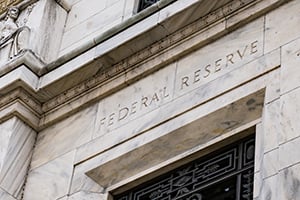 Here we are on the cusp of the end of the most important Fed meeting since, well, the last meeting. The headlines are going back and forth as to whether Chair Powell will announce tapering (i.e., slower Fed purchases of bonds). The consensus is no. But if not, what will he do? All is uncertain.
Here we are on the cusp of the end of the most important Fed meeting since, well, the last meeting. The headlines are going back and forth as to whether Chair Powell will announce tapering (i.e., slower Fed purchases of bonds). The consensus is no. But if not, what will he do? All is uncertain.
My own opinion is that the Fed will continue to kick the can down the road—that the language will continue to read that the Fed will change policy when conditions warrant. There may be a hint that we are getting closer to that point, but nothing more than that. The reason for this is that the current uncertainty—Evergrande, COVID, the debt ceiling extension, and the drop in job growth and consumer confidence—leaves the markets and the economy more vulnerable than the Fed would like in order to tighten policy. The memory of the “taper tantrum” from the last time the Fed tightened policy hangs over the bank and is keeping it very cautious. I could be wrong, though. In fact, I hope I am wrong, as I think the Fed should be more aggressive than I think it will be.
Let’s look at the context here.
The Downside
On the downside, yes, there are real political and policy risks. But there always are. Yes, we are still in the Delta wave of the pandemic. But there are signs it is rolling over. Yes, job growth and confidence are down. But job growth continues, and confidence is still outside the worry zone. Yes, economic growth could slow further. But it almost has to slow as we return to normal. Yes, the rest of the world is scary. But, again, it usually is. The downside is real, but not that unusual in the grand scheme of things.
The Upside
There is also considerable upside. Consumers, if they recover their confidence, have substantial savings to spend. With more jobs and higher wages, wage income is also up substantially. Business investment continues to be strong. Much of the current weakness will likely pass when the pandemic starts to fade again. Plus, the policy risks will likely pass in the next couple of months. Conditions are likely to look much better a couple of months from now than they do today.
This brings us back to the Fed. Its current policy was set to avert a very possible depression at the start of the pandemic—and it worked. Now, however, we are nowhere near a possible depression. Even the pessimists see slower growth, which is still growth, and the biggest concern is inflation, which comes from strong demand. The economic context is now how good will things be, rather than will we have a depression. Given that, the Fed is well past due on starting to tighten policy.
A Hint of Change?
What I expect from the Fed is more of the same and no real policy change, with perhaps a hint that change is coming sometime. That would likely reassure markets and be good in the short term. What I hope for is at least a more definite timetable and perhaps an announcement that tapering will start at a definite date. That news would likely rattle markets in the short term, but it would be positive in the longer term as a recognition by the central bank that conditions have substantially improved, despite the risks, and that we are no longer on the edge of depression. The Fed will eventually have to tighten policy. Now would be a good time to start to accustom markets to the idea.


 Print
Print

